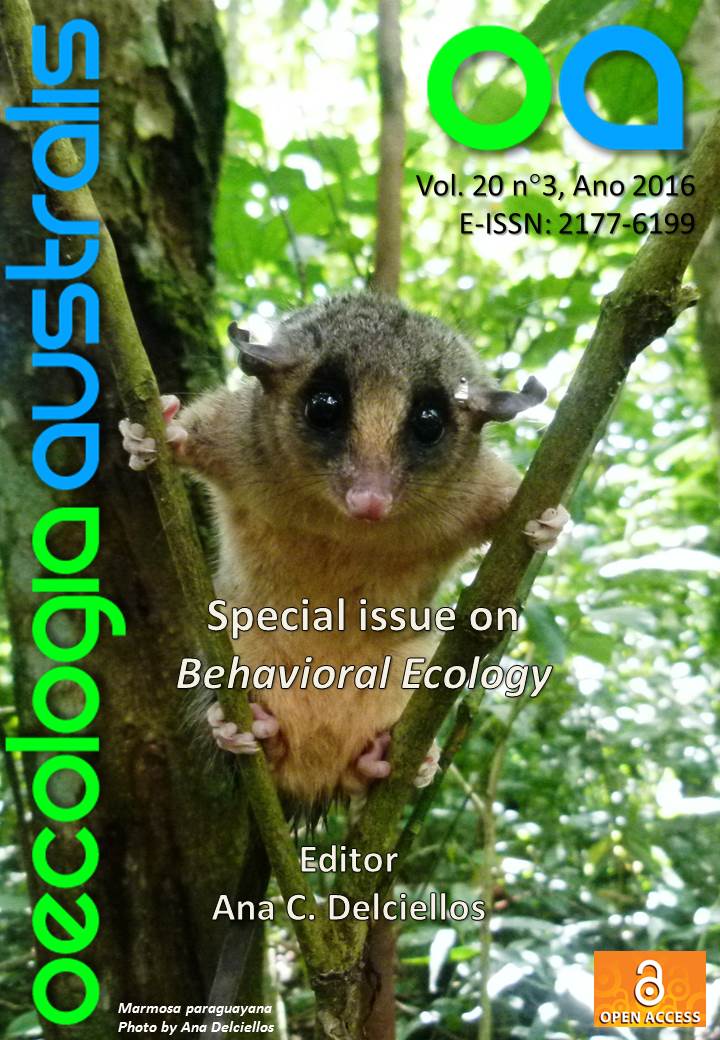POSTURAL BEHAVIOR OF THE SEMIAQUATIC NECTOMYS (RODENTIA, SIGMODONTINAE) IN SWIMMING BOUND
DOI:
https://doi.org/10.4257/oeco.2016.2003.06Keywords:
Forelimbs, Hindlimbs, Locomotion, Spine extension, Water ratAbstract
Oryzomyine rodents of Nectomys have a repertoire of swimming postural behaviors used in different ecological aspects of its life, affecting key tasks of their survival. These species present three swimming behaviors: bipedal surface swimming, quadruped symmetric submerged swimming, and swimming bound, with correspondent differences in performance. Here we describe and measure the postural behavior in the swimming bound of Nectomys squamipes and N. rattus. Rodents were filmed at 30 frames s-1 in lateral view, swimming in a glass aquarium. Video sequences were analyzed dividing the swimming cycle into power and recovery phases. The two species did not differ in swimming behavior. Both species presented displacement of the head at vertical axis during impulsion, reaching its maximum displacement at the end of the phase. The power phase of the hindlimbs was primarily responsible for the animal propulsion. The flexion and extension of the head relative to the neck occurred in the impulsion and the recovery phase, respectively. During the hindlimbs power phase occurred the extension of the spine, raising the body of the animal above the water surface. The swimming bound allows a burst of speed and likely escape predation, hence involving specific postural behavior described here for the first time. These specific behaviors are related to morphological adaptations of spine, hindlimbs and feet, that allow spine extension and hindlimb thrust in an aquatic environment beyond the abilities of terrestrial rodents.
Downloads
Downloads
Additional Files
- camiladebarros, OA Santori et al Carta de submissão.pdf (Português (Brasil))
- camiladebarros, Indicação de referees.pdf (Português (Brasil))
- camiladebarros, Figure 1 - Santori et al (final).tif (Português (Brasil))
- camiladebarros, Figure 2 - Santori et al (final).tif (Português (Brasil))
- camiladebarros, Figure 3 - Santori et al .tif (Português (Brasil))
- camiladebarros, Figure 4 - Santori et al.tif (Português (Brasil))
- camiladebarros, Figure 5 - Santori et al.tif (Português (Brasil))


